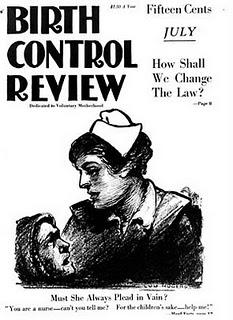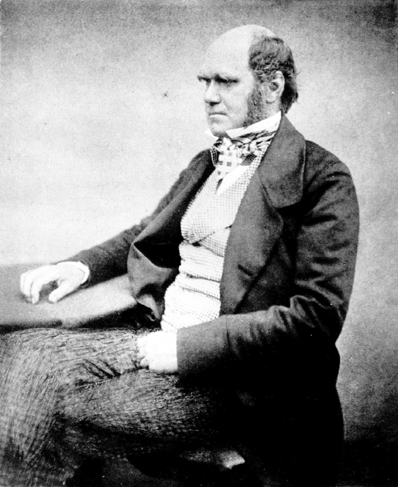 |
| A Ku Klux Klan rally (1922) Margaret Sanger addressed a KKK group in 1926 |
One of Margaret Sanger’s chief allies was Clarence Gamble, of the Proctor & Gamble dynasty, who was an ardent eugenicist and advocate of forced sterilisation. In a letter to Gamble she wrote:
“It seems to me from my experience where I have been in North Carolina, Georgia, Tennessee and Texas, that while the colored Negroes have great respect for white doctors they can get closer to their own members and more or less lay their cards on the table which means their ignorance, superstitions and doubts... The ministers [sic] work is also important and also he should be trained, perhaps by the Federation as to our ideals and the goal we hope to reach. We do not want word to go out that we want to exterminate the Negro population and the minister is the man to straighten out that idea if it ever occurs to any of their more rebellious members.”
This has often been seen as evidence that Sanger wished to eliminate the black race through eugenic birth control. However the truth is probably more complicated. There is no compelling evidence that Sanger was necessarily motivated by racism. As we have seen in previous posts, it was the physically and mentally disabled that she most desired to eliminate through contraception, segregation and sterilisation. However it is not surprising that her work was open to such interpretations as throughout her career she was happy to collaborate with white supremacists at home and Nazis abroad.
Sanger appointed Lothrop Stoddard, author of The Rising Tide of Color Against White Supremacy, as a member of the board of directors of the American Birth Control League. Stoddard believed that the growth of non-white populations was putting western civilisation at risk. The book was based in large part on the racial theories of Madison Grant, whose book The Passing of the Great Race, was described by Adolf Hitler as his ‘Bible.’ At the Nuremberg Trials a defence lawyer for Karl Brandt, Hitler’s personal physician and head of the Nazi euthanasia programme, used Grant’s book to help prove that the many of the ideas and practices implemented by the Nazis originated in the United States of America.
There were many connections between Sanger’s circle and the Nazi regime in Germany. Her friend Harry Laughlin drafted the model sterilisation law that was largely adopted by the Third Reich and he praised the Nazi regime during the 1930s. The Rockefeller Foundation supported both Sanger and Nazi eugenic programmes. Advocates of Nazi eugenics played a leading role in the international birth control movement, speaking at international conferences such as the 1927 Geneva conference which was organised by Sanger and was attended by future Nazis Edwin Baur and Eugen Fischer. Sanger's conference helped inspire the founding of the International Union for the Scientific Study of Population. The 1935 IUSSP conference was held in Berlin where American eugenicist Clarence G. Campbell toasted "that great leader, Adolf Hitler."
The American Birth Control League changed its name to The Planned Parenthood Federation of America after the United States entered the Second World War in 1942 in order to hide from its former association with Nazi policies. However despite the change of name there were continuing links between Nazis and the modern eugenic and abortion movements. Hans Harmsen, a leading German eugenicist who took part in the implementation of the Nazi forced sterilisation programme in East Frisia, was head of the German affiliate of the International Planned Parenthood Federation during Sanger’s presidency. In fact, he remained in the latter office as late as 1984.
 | ||
| Hans Harmsen - worked with both Hitler and Sanger |
Racist attitudes, or indifference to such attitudes, have always been commonplace within the abortion and birth control movement. Beatrice Blair, a leading abortion advocate, accepted money to build an abortion facility in a black area of Rochester, New York fully aware that ‘many people, in their minds, made the connection, well, we’re going to keep the blacks down.’[1] In Chicago Lonny Myers accepted the support of racist donors arguing ‘any cause has strange bedfellows.’[2] In a 2008 sting operation a Planned Parenthood clinic showed itself willing to accept donations specifically intended to be used to kill black infants and earlier this year abortionist Ashutosh Virmani spoke of killing ‘ugly black babies’ who nobody would want to adopt.[3] The eugenic nature of Britain’s abortion laws is seen by the distinction in law between disabled and non-disabled infants. The latter may be aborted up to 24 weeks but the former at any time up till birth. 90% of all those conceived with Down’s Syndrome are killed in their mother’s wombs. It is clear then that much of the movement is still motivated by eugenic principles. Hitler’s ‘Aryan race’, Stopes’ ‘irradiated race’ or Sanger’s ‘racial efficiency’ are all manifestations of the desire of the eugenicist to force the human race, no matter by what cruel or destructive means, to conform to their own ideal of perfection.
Earlier posts in this series:
Earlier posts in this series:
The Life and Crimes of Margaret Sanger Part I
The Life and Crimes of Margaret Sanger II: From Marx to Malthus
The Life and Crimes of Margaret Sanger III: Eugenics and Birth Control





